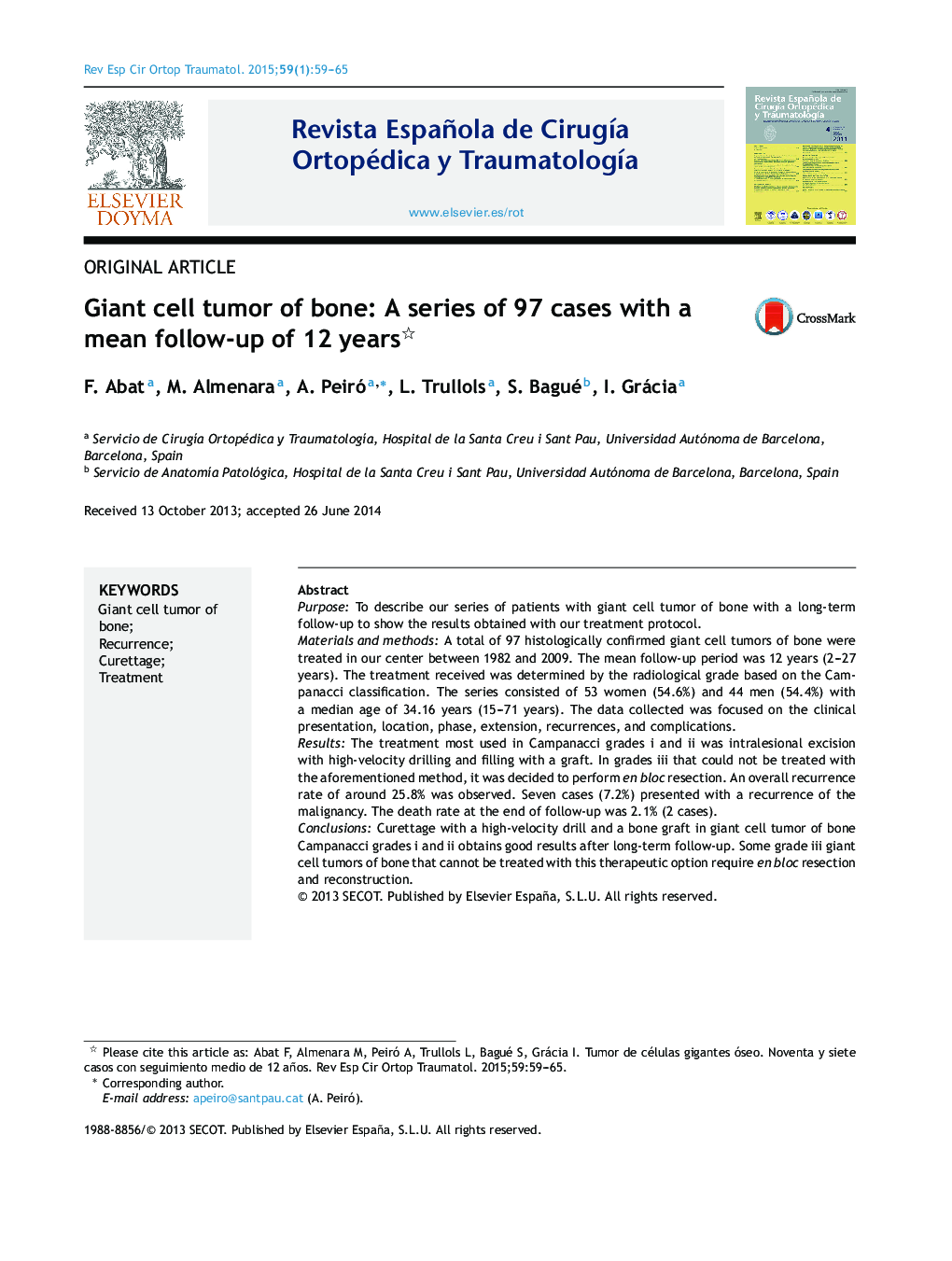| کد مقاله | کد نشریه | سال انتشار | مقاله انگلیسی | نسخه تمام متن |
|---|---|---|---|---|
| 4087206 | 1268022 | 2015 | 7 صفحه PDF | دانلود رایگان |
PurposeTo describe our series of patients with giant cell tumor of bone with a long-term follow-up to show the results obtained with our treatment protocol.Materials and methodsA total of 97 histologically confirmed giant cell tumors of bone were treated in our center between 1982 and 2009. The mean follow-up period was 12 years (2–27 years). The treatment received was determined by the radiological grade based on the Campanacci classification. The series consisted of 53 women (54.6%) and 44 men (54.4%) with a median age of 34.16 years (15–71 years). The data collected was focused on the clinical presentation, location, phase, extension, recurrences, and complications.ResultsThe treatment most used in Campanacci grades i and ii was intralesional excision with high-velocity drilling and filling with a graft. In grades iii that could not be treated with the aforementioned method, it was decided to perform en bloc resection. An overall recurrence rate of around 25.8% was observed. Seven cases (7.2%) presented with a recurrence of the malignancy. The death rate at the end of follow-up was 2.1% (2 cases).ConclusionsCurettage with a high-velocity drill and a bone graft in giant cell tumor of bone Campanacci grades i and ii obtains good results after long-term follow-up. Some grade iii giant cell tumors of bone that cannot be treated with this therapeutic option require en bloc resection and reconstruction.
ResumenObjetivoDescribir una serie de tumores óseos de células gigantes con largo seguimiento, mostrando los resultados obtenidos con nuestro protocolo terapéutico.Material y métodoEntre 1982-2009, 97 pacientes con lesiones histológicamente confirmadas como tumores óseos de células gigantes fueron tratados en nuestro centro con un seguimiento medio de 12 años (2-27 años). El tratamiento recibido lo determinó la clasificación de Campanacci. La serie la formaron 53 mujeres (54,6%) y 44 hombres (54,4%) con una edad media de 34,16 años (15-71 años). Los datos recogidos se centraron en la presentación clínica, localización, estadio, extensión, recurrencias y complicaciones.ResultadosEl tratamiento más utilizado en los estadios i y ii de Campanacci fue escisión intralesional con fresado a alta velocidad y rellenado con injerto homólogo, mientras que en los estadios iii que no podían ser tratados con este método se abogó por la resección en bloque. Se halló una recurrencias global del 25,8%. Siete casos (7,2%) presentaron malignización. La tasa de exitus fue del 2,1% (2 casos).ConclusiónLa opción terapéutica presentada para los tumores óseos de células gigantes que consiste en legrado con fresado a alta velocidad y aporte de injerto óseo en los grados i y ii de Campanacci obtiene resultados comparables con literatura actual. Los tumores de grado iii, que no pueden ser tratados con la opción terapéutica mencionada anteriormente, requieren resección en bloque y reconstrucción posterior.
Journal: Revista Española de Cirugía Ortopédica y Traumatología (English Edition) - Volume 59, Issue 1, January–February 2015, Pages 59–65
